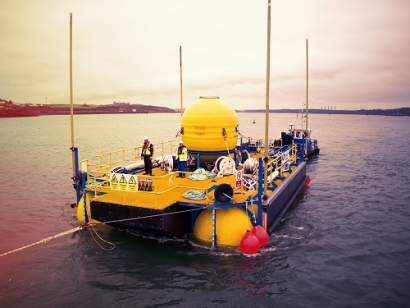
Developed with support from organizations including the Welsh Government and European Regional Development Fund, the WaveSub captures wave energy mid to far offshore by utilizing the continual orbital motion of waves to drive a sophisticated PTO system. Its ability to ‘hide’ from storms minimizes stress put on the device. This move into initial sea-based tests follows the unveiling of the WaveSub at Pembroke Dock in late 2017.
Prior to its launch, the device underwent a full suite of land-based commissioning tests.
Commenting on the initial results, Dr. Graham Foster, Chief Technical Officer at MPS said, “The positive results from initial sea-based tests for the WaveSub are hugely encouraging for the MPS team. We hope to move through the remainder of this phase of testing with similar success before moving into tests which can confirm the operational ability and energy generational capacity of the WaveSub device in open sea conditions.”
Following the completion of tests in Milford Haven, the device will be towed to the marine test site FaBTest in Cornwall, England. Here, MPS will demonstrate the WaveSub’s power-generation capacity across a broad range of sea states, the rapid installation methodology, its ease of maintenance and its survivability through the harshest of sea conditions. Successful results will enable MPS to move ahead with its long-term plan to build a full-scale, grid connected WaveSub by 2020.
Photo: WaveSub (Marine Power Systems)

